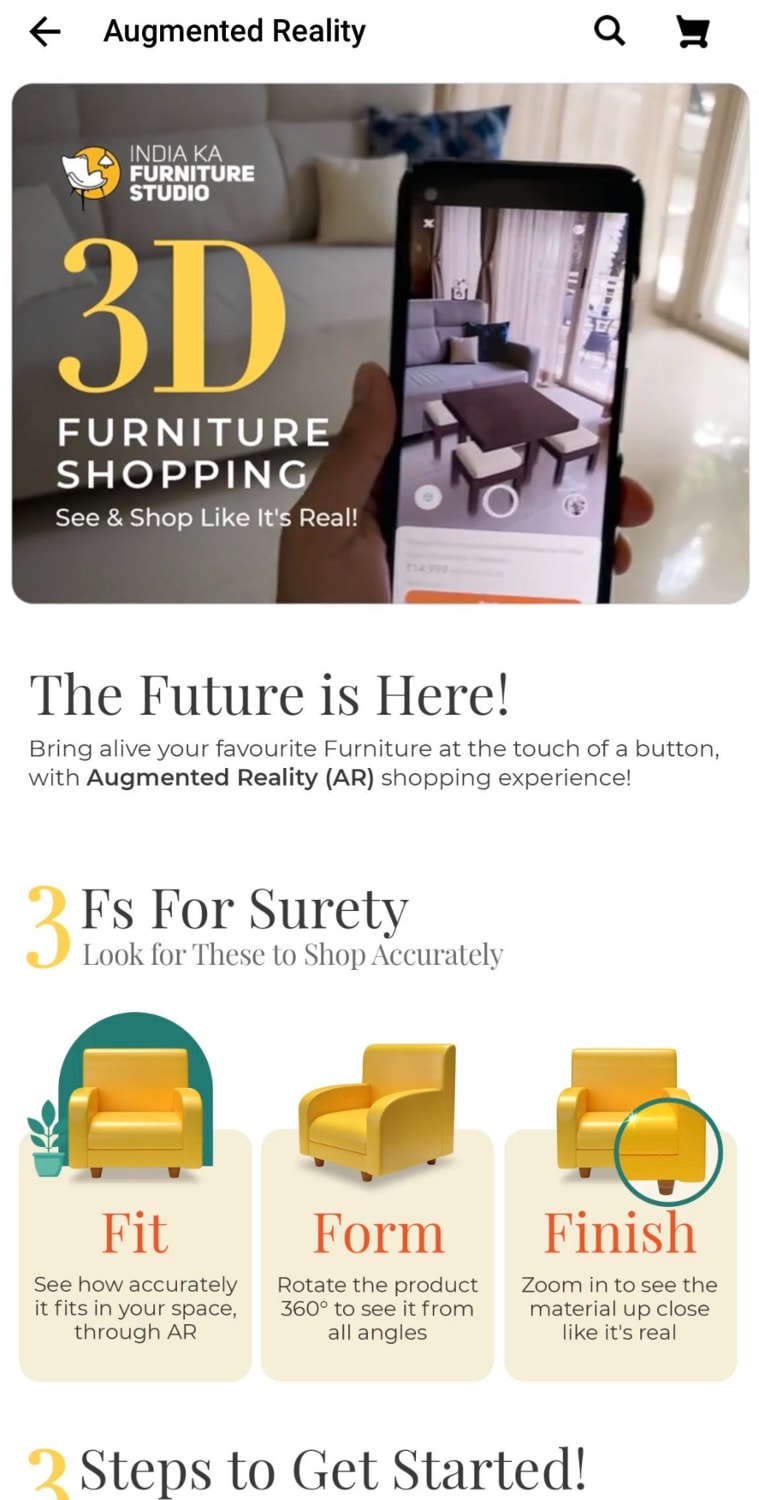[ad_1]
“You don’t need to come to the showroom, but I can give you a near showroom-like experience.” That is Scapic co-founder Sai Krishna VK’s take on how Augmented reality (AR) will change retail experiences across the world during the pandemic.
Krishna’s team is behind Flipkart’s newly-launched 3D shopping feature that lets buyers juxtapose furniture in their home environment using AR on the smartphone. The e-commerce giant is simplifying how you shop for your next sofa or center table by using AR to show where they would ultimately be placed in the house.
“I know the size, fit and finish exactly in the environment I wanted, which has never been possible before,” he tells indianexpress.com over a video call.
Founded by Krishna and Ajay Poona Venkatesh in 2017, Bengaluru-based Scapic offered WebXR-based solutions to clients across e-commerce and marketing before it got acquired by Flipkart last year. Now, Krishna and his team work exclusively on Flipkart camera, arguably India’s largest augmented reality platform of services specifically for e-commerce.
 Augmented reality (AR) lets users view the real world overlaid with computer-generated imagery and information.
Augmented reality (AR) lets users view the real world overlaid with computer-generated imagery and information.
There is no separate app needed to visualise chairs, tables, or sofas in augmented reality. All you need to do is open the existing Flipkart app, search for a furniture piece you are interested in, and press on the new button that says “View in your room”. With the help of your smartphone camera, the new 3D shopping feature allows Flipkart customers to position and visualise a piece of furniture in their home before ordering.
“I am more confident of what I’m going to purchase, which means that the returns go down and the conversions go up,” he said. For now, though, the augmented reality functionality is limited to the furniture category, which includes beds, office chairs, dining tables, coffee tables, etc. But in the coming months, Flipkart plans to replicate a similar AR experience when you are able to try lipstick on your face or eyeshadows using the phone’s front-facing camera.
Krishna says AR will try and bring things as close as possible to the pre-pandemic world. “If I can place a TV or fridge or washing machine on one side, or on the other side, place a new set of spectacles, makeup, or filters., I think retail will benefit from AR.”
Krishna, however, knows it will take some time before this immersive technology becomes predictable and easy to understand. “Making augmented reality boring means that you have made the feature so common and so ubiquitous that people will just think it’s a part and parcel of their daily lives like Instagram… when you apply a dog filter on your face, you’re not screaming in joy, you know what the filter was supposed to do?”
Although it’s been a week since Flipkart started including augmented reality as part of the product’s story on its e-commerce platform, Krishna says the first step is to familiarise consumers with the new tech and how buying furniture can be completely changed by AR. “Nine out of 10 shoppers actually have no clue that this can even be done on their smartphones,” he said, adding that the goal right now is to start off building the “simplest, easiest and smallest features” that people can start to experience on their phones.
 Last year, Flipkart acquired Krishna’s Augmented Reality (AR) start-up Scapic. (Image credit: Scapic)
Last year, Flipkart acquired Krishna’s Augmented Reality (AR) start-up Scapic. (Image credit: Scapic)
There is no doubt that augmented reality offers retailers like Flipkart a new way to interact with consumers by blending the physical and digital worlds, but the fact is that the ecosystem around AR is still missing. So Krishna says there is a need to create a use case that takes advantage of smartphone cameras that might help increase the mass adoption of AR. “The camera is non-existent in the shopping experience,” he says. Krishna predicts the camera will become a more important part of the shopping experience going forward.
Krishna toutes AR as a “killer” feature in a much larger application. He, in fact, compares AR with voice search. “AR is a feature, but a powerful feature. You will require a ship that can be an e-commerce or education portal. These are the individual companies and AR could become an indispensable feature for each of these companies to do something useful in their use cases.”
Despite its potential, AR is still at an experimental stage. “AR as of today is a very specific and niche tool that can be used in order to make your workflows faster, save a lot of time, or make more money; only in these three areas, AR will operate now and in the next 12 months,” he adds.
A graduate from Stanford University Graduate School of Business, 26-year-old Krishna believes e-commerce is going to move to a very different era over the next three years and augmented reality technology will only help make shopping easier and immersive.
[ad_2]
Source link








